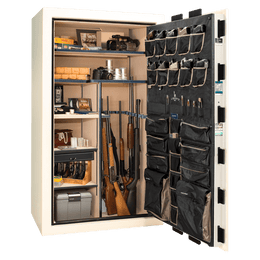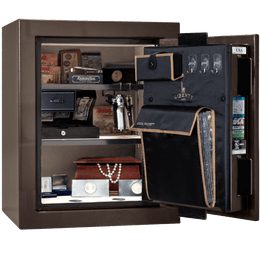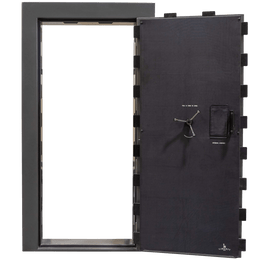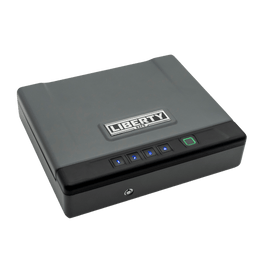Finding the Perfect Spot for Your Safe is as Crucial as the Safe Itself
Investing in a high-quality safe is a significant step towards protecting your most valuable possessions. But the process doesn't end once you've chosen your model. The placement of your safe is a critical decision that directly impacts its effectiveness. A poorly placed safe can undermine its security features, making it more vulnerable to theft, fire, or water damage. The ideal location is a strategic balance between convenient access for you and maximum difficulty for unauthorized individuals.
This guide will walk you through the essential factors to consider when planning your safe's location, ensuring your valuables receive the comprehensive protection they deserve. By thinking through the logistics of placement, you can enhance your peace of mind and the overall security of your home.
Key Factors in Strategic Safe Placement
Security and Discretion
The first rule of safe placement is to keep it out of sight. Intruders are typically on a tight schedule, and they will check the most obvious locations first—like the master bedroom closet or a visible home office. Placing your safe in a less predictable area forces them to spend more time searching, increasing the likelihood they will leave empty-handed. Consider locations that are not immediately visible and are away from the primary traffic areas of your home.
Environmental Protection
A safe's location can greatly influence its ability to withstand environmental threats. For fire protection, avoid areas with high concentrations of flammable materials, like a garage filled with chemicals or a utility room with a furnace. For flood protection, the basement is often a concern. If you choose a basement location, ensure the safe is elevated off the floor on a concrete slab or platform. Humidity is another factor; a damp environment can affect both the safe's contents and its locking mechanism over time. A climate-controlled area is always preferable.
Structural Integrity and Weight
Safes are heavy. A large model like the Collector Gun Safe can weigh over 1,500 pounds. You must ensure the floor can support this weight. A concrete slab on the ground floor or in a basement is ideal. If you plan to install a safe on an upper floor with a wood-joist foundation, it's crucial to place it against a load-bearing wall and position it so the weight is distributed across multiple joists. For particularly heavy safes, consulting a structural engineer is a wise precaution.
The Importance of Anchoring
No matter where you place your safe, it must be securely anchored to the floor. A non-anchored safe can be tipped over, giving a thief leverage to pry the door open, or potentially carted away to be opened elsewhere. Bolting the safe to a concrete or wood floor makes it a permanent fixture of your home, dramatically increasing its security. Refer to our Gun Safe Use and Care guide for more details on proper installation.
Popular vs. Smart Safe Locations: A Comparison
Choosing an unconventional location can significantly enhance your security.
Common (Less Secure) Spots
- Master Bedroom Closet: The first place a burglar looks.
- Visible Home Office: Easily found and often a target.
- Easily Accessible Garage Corner: Visible from the outside and less secure.
Smarter (More Secure) Locations
- Bolted to a Basement Floor: Excellent structural support and out of sight.
- Inside a Secondary Closet: A hall, linen, or storage closet is less obvious. Many closet safes are designed for these spaces.
- Utility or Workshop Room: These spaces often blend in and provide a solid foundation.
- Concealed by Custom Cabinetry: For the ultimate discretion, building a cabinet or false wall around your safe is highly effective.
Tips for Flawless Installation Planning
- Measure Your Path: Before your safe arrives, measure all doorways, hallways, and stairwells to ensure it will fit. Planning the route is key, as highlighted in our guide on getting your new safe in your home.
- Assess and Prepare the Floor: Check if the floor is concrete or wood. For wood floors, identify the direction of the joists to ensure proper weight distribution. Clear the area completely before delivery.
- Plan for Accessories: If your chosen spot is dark, consider a gun safe LED light kit. For humid areas like a basement or garage, a dehumidifier is a must-have to protect documents and firearms from moisture.
- Hire Professionals: Moving a safe is a difficult and potentially dangerous task. Liberty Safe's network of professional dealers across the United States can deliver and install your safe correctly and safely, ensuring it is properly anchored for maximum security.
Did You Know?
Anchoring a safe to the floor can make it more than 10 times harder for a thief to tamper with or remove. It is the single most important step after choosing a location. Furthermore, placing a safe in a location insulated by multiple walls can improve its performance in a fire, as each wall adds a layer of protection from heat.
Nationwide Protection for American Homes
Every home in the United States has unique security needs, from urban apartments to sprawling rural properties. The principles of secure safe placement, however, are universal. As America's #1 safe manufacturer, we build our products with the diverse needs of American homeowners in mind. Our safes, such as the popular Centurion Series, are designed to provide robust, reliable security that fits into the modern American home. By planning your safe's location thoughtfully and relying on our network of expert installers across the country, you can achieve true peace of mind, knowing your valuables are protected by the best.
Ready to Secure Your Valuables the Right Way?
Choosing the right safe and the right location is a critical part of your home security plan. If you have questions or need expert advice on selecting and installing a safe, our team is here to help.
Contact Our Experts TodayFrequently Asked Questions
Q: Can I install a safe on a second floor?
A: Yes, but with careful consideration. Lighter safes can often be installed on upper floors without issue. For heavier models, the safe should be placed against a load-bearing wall and across multiple floor joists. For any safe weighing over 1,000 lbs, we strongly recommend consulting a professional to assess your home's structural capacity.
Q: What is the best location to protect a safe from a fire?
A: The best location is on the ground floor, in a corner where it is surrounded by as many walls as possible. Basements are also excellent as they tend to stay cooler during a house fire. Avoid placing safes near kitchens, laundry rooms, or garages where fire hazards are more common.
Q: Should I hide my safe?
A: Absolutely. Discretion is a key layer of security. A hidden safe is one that a burglar may never even find. Concealing it inside a closet, under stairs, or within custom cabinetry will always be more secure than placing it in plain sight.
Q: Why is bolting down my safe so important?
A: Anchoring your safe to the foundation prevents thieves from tipping it over to gain better leverage for prying or from removing the entire safe from your property. An unbolted safe is a target; a bolted safe is a fortress.
Q: Do I need a dehumidifier for my safe?
A: It is highly recommended, especially if the safe is located in a basement, garage, or another area with potential humidity. A dehumidifier protects metal items from rust and important documents or photos from mildew and moisture damage.
Glossary of Terms
Anchoring
The process of physically securing a safe to the floor (usually concrete or wood) using heavy-duty bolts. This is a critical security measure to prevent the safe from being moved or tipped over.
Fire Rating
A rating that indicates how long a safe can withstand a fire at a specific temperature while keeping its internal temperature below a certain point (typically 350°F). For example, a safe might be rated for 110 minutes at 1200°F.
Gauge Steel
A measurement of the thickness of the steel used to construct the safe's body and door. A lower gauge number indicates thicker, stronger steel. For example, 10-gauge steel is thicker and more resistant to prying than 14-gauge steel.
Load-Bearing Wall
An interior or exterior wall that supports the weight of the structure above it. Placing a heavy safe near a load-bearing wall is crucial for structural integrity, especially on upper floors.







